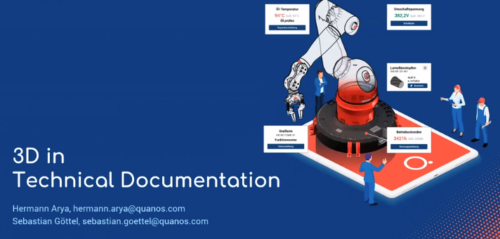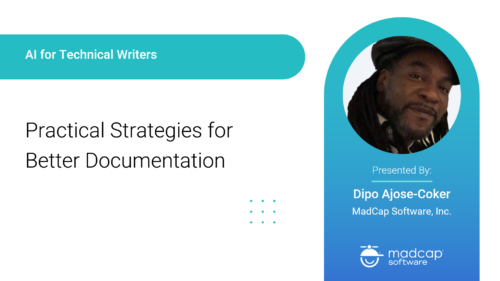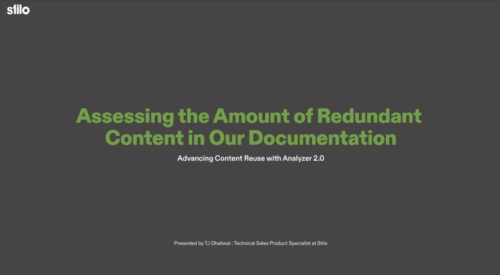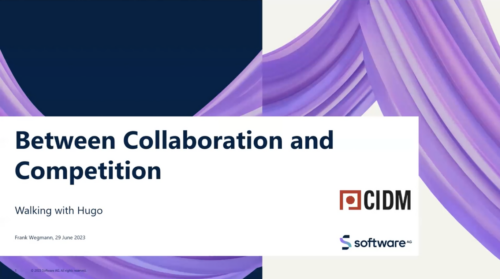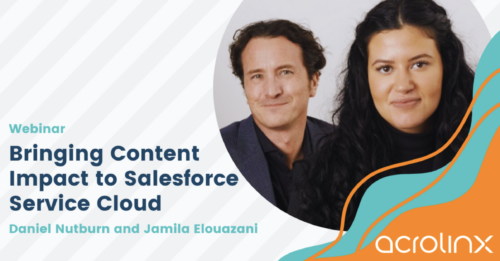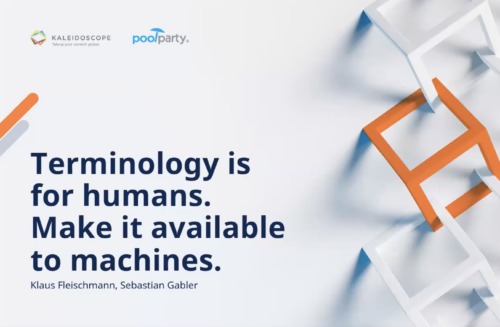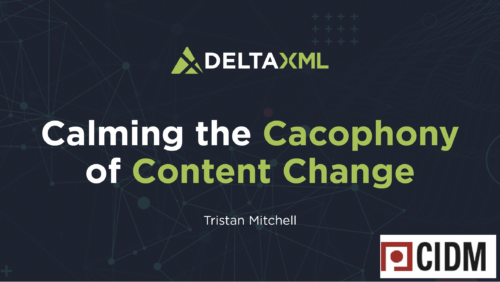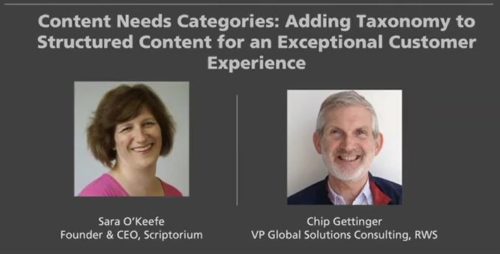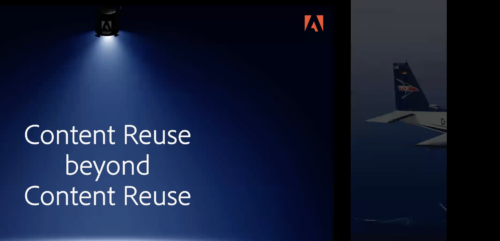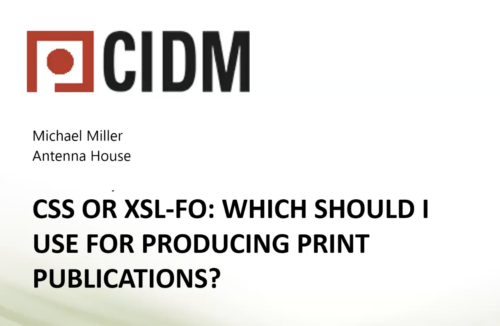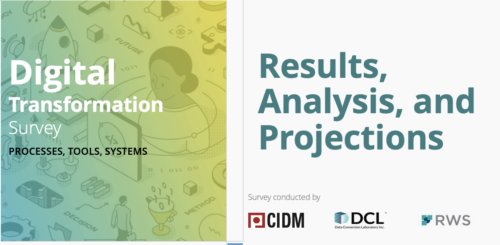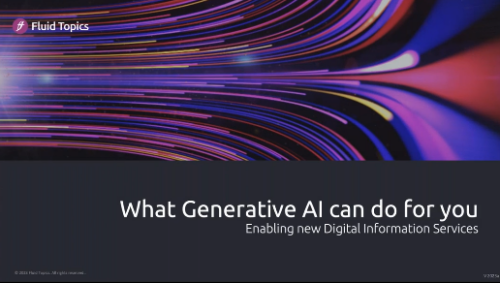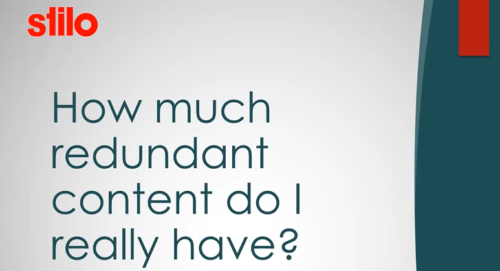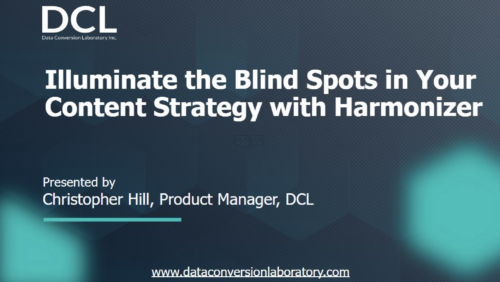-
Recorded on September 15, 2022

3D has become indispensable in engineering departments. But 3D models rarely find their way into technical documentation. In spare parts catalogs, 3D catalogs have become standard thanks to automatic processing. There, people appreciate that 3D views are intuitively understandable and offer additional interactivity in online documentation. What can technical authors learn from the 3D experiences of the spare parts catalog world?
What steps are necessary in a CCMS to not only visually enhance online documentation with interactive 3D data, but also to enable new access to information? Which formats and tools can be used?
Presented by:
Sebastian Göttel is Head of Marketing and Product Management at Quanos Content Solutions GmbH. The computer scientist has been involved with XML editing systems and content delivery since 1998. In the Tekom environment, he worked on version 1.0 of the iiRDS standard. [email protected]
Hermann Arya is a digital professional with 15+ years of experience in the aftersales project environment. In Europe he was and still is responsible for the revolution and evolution of 3D visualizations in the service information system context. As Head of Professional Service at Quanos Service Solutions GmbH and through the execution of well over 150 customer projects, he has also been able to build up extensive knowledge of the value chain around service information systems. [email protected]
-
Recorded on June 5, 2024

Crafted for technical writers, savvy documentation managers, and stakeholders looking to innovate, this webinar aims to dissect how AI is reshaping the creation, management, and delivery of technical content. Attendees will learn how to leverage AI for more than just efficiency, with a focus on enriching content quality, enhancing user engagement, and informing content strategy with data-driven insights. Join Dipo as he encourages participants to delve into the optimal positioning of AI as a fundamental component of their technical communication toolkit, with the ultimate goal of redefining the boundaries of technical writing and documentation management.
Presented by: Dipo Ajose-Coker, MadCap Software After moving to France in 2005, Dipo earned an MA in Multilingual and Multimedia Document Conception from the Université Paris Cité. For the past 18 years, he has combined his language and IT skills, working as a DITA expert, technical writer, editor, and proof-reader in Fintech and MedTech. In 2021, Dipo transitioned to Content Creation and Marketing. As a vital intermediary, he bridges the gap between developers and end users, representing both perspectives. In the grand symphony of the Technical Communications industry, Dipo conducts, unifying and harmonizing the voices of users, industry experts and vendors.
After moving to France in 2005, Dipo earned an MA in Multilingual and Multimedia Document Conception from the Université Paris Cité. For the past 18 years, he has combined his language and IT skills, working as a DITA expert, technical writer, editor, and proof-reader in Fintech and MedTech. In 2021, Dipo transitioned to Content Creation and Marketing. As a vital intermediary, he bridges the gap between developers and end users, representing both perspectives. In the grand symphony of the Technical Communications industry, Dipo conducts, unifying and harmonizing the voices of users, industry experts and vendors.
-
Recorded on: November 14, 2024
 Presented by: Toni Ressaire, Technically Write IT (TWi); Rahel Bailie, Technically Write IT (TWi); and Fraser Doig, RWS
Presented by: Toni Ressaire, Technically Write IT (TWi); Rahel Bailie, Technically Write IT (TWi); and Fraser Doig, RWSAre you struggling to articulate the value of structured content to your management? Discover how the challenge of AI readiness can become your greatest opportunity.
In this webinar, we'll explore how the tightening AI regulations can transform structured content into the Swiss army knife of your organization. By adopting structured content, you're not just preparing for AI – you're solving multiple challenges with a single strategy.
Learn how structured content can help you:
- Achieve AI readiness
- Improve accessibility
- Comply with upcoming legislation
- Deliver personalized user experiences
- Scale content operations across products, languages, and markets while containing your budget
For content professionals and decision-makers alike, this webinar provides a compelling case for structured content as the cornerstone of AI readiness and beyond. You'll gain valuable insights on how to communicate this multifaceted value proposition to your management, turning potential regulatory hurdles into a catalyst for organizational improvement.
Join us to discover why structured content isn't just about AI readiness – it's the key to solving numerous content challenges while future-proofing your organization.

Toni Byrd Ressaire, MSc Technical Communications, is the Director of Innovation at Technically Write IT. She helps to drive strategy and innovative solutions for TWi clients. TWi is an Ireland-based consultancy of content specialists who provide content strategy, content operations, language, learning, user adoption, and content production services. TWi works with companies wanting to solve their content problems for business impact.
 Rahel Anne Bailie, FSTC, FISTC, is the Content Solutions Director at Technically Write IT. She brings a wealth of experience to helping companies get more value from their content assets. TWi is an Ireland-based consultancy of content specialists who provide content strategy, content operations, language, learning, user adoption, and content production services. TWi works with companies wanting to solve their content problems for business impact.
Rahel Anne Bailie, FSTC, FISTC, is the Content Solutions Director at Technically Write IT. She brings a wealth of experience to helping companies get more value from their content assets. TWi is an Ireland-based consultancy of content specialists who provide content strategy, content operations, language, learning, user adoption, and content production services. TWi works with companies wanting to solve their content problems for business impact.
 Fraser Doig is a Senior Associate Product Marketing Manager specializing in helping companies of all industries understand how structured content can elevate their business. At RWS, Fraser works in the Language and Content Technology division, always on the lookout for the latest and greatest developments in the market. He is a regular contributor to publications such as KMWorld and Customer Service Manager Magazine.
Fraser Doig is a Senior Associate Product Marketing Manager specializing in helping companies of all industries understand how structured content can elevate their business. At RWS, Fraser works in the Language and Content Technology division, always on the lookout for the latest and greatest developments in the market. He is a regular contributor to publications such as KMWorld and Customer Service Manager Magazine.
-
Recorded on April 26, 2023

One significant benefit of adopting a structured standard like DITA is content reuse, which can reduce redundancy, improve consistency, and minimize overall content. However, due to typos, partial matches, and other inconsistencies, estimating the value of content reuse can be challenging- especially before the conversion occurs. By using Analyzer, users can narrow down their approximation and investigate similar matches in their source content before the conversion, providing valuable insight into the potential benefits of adopting a structured standard. Capture valuable metrics to substantiate content projects to key stakeholders. Learn how businesses can manage their content more effectively, increase productivity, and better understand content reuse's value in their documentation.
Join TJ as he uses Stilo’s Analyzer to investigate source content for hidden reuse. The latest release from Stilo offers a range of improvements to the user management system, product architecture, and sequence GUI redesign to streamline your content management process.
Presented by TJ Dhaliwal, Stilo
TJ Dhaliwal is a Technical Sales Product Specialist at Stilo, helping customers uncover solutions to their content conversion needs. With a solid technical background in engineering and a passion for public speaking, he’s successfully bridged the gaps between project stakeholders. As a problem solver, TJ has helped several enterprise-level companies convert tens of thousands of pages of their content to DITA.
-
Recorded on June 29, 2023
 In recent years the software industry has seen a rising trend towards lightweight documentation on the side of SMEs. While this may work on a small scale, it may get tricky when there is a need to interact with more corporate documentation environments. Bridging the gap between markup and markdown can present challenges not only on the technical level. So-called static site generators (SSG) are often used to bring Markdown content to the audience, focusing on speed, layout and ease of use, but they lack productivity features that are baked into DITA right away and essential to technical documentation. Enter a scenario in which you need to pull markup-agnostic content contributors to the other side and learn how Lightweight DITA might help you to foster collaboration instead of deepening competition. Let us see how far a walk with Hugo, a very popular SSG, can take us in this scenario and discuss the implications of a fragmenting corporate documentation landscape.
In recent years the software industry has seen a rising trend towards lightweight documentation on the side of SMEs. While this may work on a small scale, it may get tricky when there is a need to interact with more corporate documentation environments. Bridging the gap between markup and markdown can present challenges not only on the technical level. So-called static site generators (SSG) are often used to bring Markdown content to the audience, focusing on speed, layout and ease of use, but they lack productivity features that are baked into DITA right away and essential to technical documentation. Enter a scenario in which you need to pull markup-agnostic content contributors to the other side and learn how Lightweight DITA might help you to foster collaboration instead of deepening competition. Let us see how far a walk with Hugo, a very popular SSG, can take us in this scenario and discuss the implications of a fragmenting corporate documentation landscape.
Presented by Frank Wegmann
Frank Wegmann has 20+ years of experience in the markup world. Rooted in multilingual university research projects using SGML and XML, he has been advancing custom automated build systems for technical documentation at Software AG since 2001. In recent years the original focus shifted to DITA, and, inevitably, also Markdown. He is a regular speaker at international conferences and engaged in OASIS DITA committees, where he now also acts as co-chair of the Lightweight DITA subcommittee.
-
January 17, 2024 9:00 am – 10:30 am PT | 12:00 pm – 1:30 pm ET | 5:00 pm – 6:30 pm GMT

Far too often, GenAI projects are considered the exclusive realm of IT, while Knowledge and Content Development teams remain in the background. Unfortunately, this approach often leads these projects to failure.
Presented by Fabrice Lacroix, Lief Erickson, and Amber Swope
Join us for an insightful webinar exploring why content developers and information architects must be at the forefront of GenAI Projects. Discover how their expertise and insights propel AI initiatives, transforming content into dynamic, user-centric solutions. Learn why empowering content specialists with GenAI projects is critical for fostering innovation and enhancing customer experiences.
This webinar is presented by Amber Swope DITA specialist at DITA Strategies, Lief Erickson, Principal Consultant at Intuitive Stack, and Fabrice Lacroix, CEO and founder of Fluid Topics.
Fabrice Lacroix is a serial entrepreneur and a technology pioneer. He has been working for 25 years on the development of innovative solutions around search technology, content enrichment and AI. He is the founder of Fluid Topics, the leading Content Delivery Platform that reinvents how users search, read and interact with technical documentation.
 Lief Erickson is co-founder of Intuitive Stack, a content strategy consultancy. He holds a master’s degree in Content Strategy from FH Joanneum (Austria), where he teaches information architecture. ContentOps, taxonomies, and search are leading interests for Lief, who has held positions as a tech writer and IA.
Lief Erickson is co-founder of Intuitive Stack, a content strategy consultancy. He holds a master’s degree in Content Strategy from FH Joanneum (Austria), where he teaches information architecture. ContentOps, taxonomies, and search are leading interests for Lief, who has held positions as a tech writer and IA.
 Amber Swope is an internationally recognized Information Architect, DITA expert, and IA consultant. With over 20 years of information development experience and 15 years of DITA expertise, Amber specializes in helping organizations create opportunity through IA.
Amber Swope is an internationally recognized Information Architect, DITA expert, and IA consultant. With over 20 years of information development experience and 15 years of DITA expertise, Amber specializes in helping organizations create opportunity through IA. -
Recorded on June 14, 2023

Delivering Value to Customers Is More Imperative Than Ever.
Join Acrolinx VP of Global Partner and Alliances, Dan Nutburn and Director of Partner Solutions, Jamila Elouazani for this webinar as they discuss:- How Salesforce Service Cloud users can improve the quality and consistency of their content
- Real-world examples of how and why customers are using the newly updated Salesforce Knowledge + Acrolinx Integration
- Why the AppExchange program is so important to Salesforce and its customers
This webinar will also feature special guest Julia Taube, ISV Manager at Salesforce.
Presented by Daniel Nutburn and Jamila Elouazani Daniel Nutburn is an accomplished executive and the Vice President of Global Partners and Alliances at Acrolinx. Daniel's got a wealth of experience in channel development, alliance management, and software solution selling. He's built an international partner network and has a solid track record of success with blue-chip and high-growth software companies.
Beyond his professional achievements, Dan is most proud of his ability to embarrass his daughters with his Karaoke singing and Cacti collection. LinkedIn: https://www.linkedin.com/in/daniel-nutburn/
Daniel Nutburn is an accomplished executive and the Vice President of Global Partners and Alliances at Acrolinx. Daniel's got a wealth of experience in channel development, alliance management, and software solution selling. He's built an international partner network and has a solid track record of success with blue-chip and high-growth software companies.
Beyond his professional achievements, Dan is most proud of his ability to embarrass his daughters with his Karaoke singing and Cacti collection. LinkedIn: https://www.linkedin.com/in/daniel-nutburn/
 Jamila Elouazani is the Director of Partner Solutions, Global at Acrolinx, a leading content optimization technology for enterprise companies. With years of experience working in solution and product-focused environments, Jamila has honed her skills in providing technical support to businesses looking to close deals with Fortune 500 companies.
Jamila Elouazani is the Director of Partner Solutions, Global at Acrolinx, a leading content optimization technology for enterprise companies. With years of experience working in solution and product-focused environments, Jamila has honed her skills in providing technical support to businesses looking to close deals with Fortune 500 companies.In addition to her professional accomplishments, Jamila is a family-oriented individual who enjoys expressing her creativity through singing and fashion design. Her passion for both the arts and technology has allowed her to bring a unique perspective to her work in the content optimization industry.
With her strong technical background and creative mindset, Jamila has become a respected thought leader in the industry and is committed to helping businesses achieve their content optimization goals.
-
Recorded on June 21, 2023
 Taxonomies and terminologies can be seen as different sides of the same coin. However, the focus is quite different. Taxonomies make linguistic data available for machines and humans to distill knowledge and often to manage chaos. Terminologies harmonize language, make sure everyone uses consistent and correct words, and try to avoid chaos from the outset. Organizations obviously require both, so it is only natural for Semantic Web Company and Kaleidoscope to integrate their two platforms and offer a combined taxonomy and terminology management solution.
Taxonomies and terminologies can be seen as different sides of the same coin. However, the focus is quite different. Taxonomies make linguistic data available for machines and humans to distill knowledge and often to manage chaos. Terminologies harmonize language, make sure everyone uses consistent and correct words, and try to avoid chaos from the outset. Organizations obviously require both, so it is only natural for Semantic Web Company and Kaleidoscope to integrate their two platforms and offer a combined taxonomy and terminology management solution.
This presentation and demo show you:
- how to connect your Pool Party taxonomy to the Kalcium terminology suite
- and add terminology benefits to your existing data:
- human-grade, rich metadata, organizational decision workflows, and automatic guidance in word choice for authors and translators alike
Presented by Klaus Fleischmann and Sebastian Gabler

Klaus Fleischmann studied translation and IT in Vienna, and holds an MA in Conference Interpreting from Monterey, California, and a MAS in Technical Communication from Krems, Austria. In 1996, he founded Austria-based Kaleidoscope, a company implementing content, translation, and terminology management processes for internationally active companies. Kaleidoscope develops online collaboration software for enterprise-level terminology workflow, translator query management, in-country review, etc., making the translation quality process comprehensible and strategically manageable. In 2007, he became CEO of Austria´s leading LSP, Eurocom Translation Services. Always active in the industry, Klaus got voted into the Gala Board of Directors in 2015 and 2017.
 Sebastian Gabler originally trained as a Recording Producer with a diploma from the Berlin University of the Arts (UdK) and 5 years of music production for radio, TV, and the recording industry; he has been pursuing a career in archive and information management for over 15 years
Sebastian Gabler originally trained as a Recording Producer with a diploma from the Berlin University of the Arts (UdK) and 5 years of music production for radio, TV, and the recording industry; he has been pursuing a career in archive and information management for over 15 yearsIn 2017, he joined Semantic Web Company in Vienna and was appointed Chief Customer Officer in 2020. In this position, he supports customers from all industries in developing intelligent applications with semantic AI. Sebastian has worked in various companies in the areas of technology, sales, and project management, including 11 years in the field of audiovisual archiving, and has recently completed his Master of Sciences in Library and Information Science.
-
Recorded on October 5, 2023

If there’s one thing that never changes, it’s that everything changes. And when it comes to technical documentation, keeping on top of change can become overwhelming. Whether you’re releasing on the same schedule as the software you’re documenting, or working to your own time frame, deadlines add extra pressure. How can you be sure that you have control over the changes that are being made? How do you know that unintended changes aren’t slipping through the net? How can you satisfy regulators and keep them updated with requested changes?
In this webinar, we’ll share our top tips for managing changing content and calming the cacophony it can create.
Presented by: Tristan Mitchell, DeltaXML Tristan is Product Director at DeltaXML, a technology company with world-leading software products for the management of change in structured content. He has a deep understanding of DeltaXML’s product suite and loves to help customers create extra value in their content using change management. Tristan is a father to three daughters, a movie lover, and a keen runner.
Tristan is Product Director at DeltaXML, a technology company with world-leading software products for the management of change in structured content. He has a deep understanding of DeltaXML’s product suite and loves to help customers create extra value in their content using change management. Tristan is a father to three daughters, a movie lover, and a keen runner.
-
Recorded: February 23, 2022 Structured content provides numerous benefits for organizations with authoring, managing, and delivering information. Perhaps your organization has realized these benefits—but what’s next? A formal content classification system, or a taxonomy, provides a framework that supports search, filtering, classification, consistent terminology, and more. The combination of taxonomy and structured content opens up compelling possibilities for digital delivery. Add continuous updates and advancements in business data, and you can transform the customer experience—but you may feel a little exposed out on the leading edge of technology. Sarah and Chip will present and discuss emerging trends, techniques, and technology for your digital information initiatives. During the webinar you’ll learn:
- How do you select and manage a good taxonomy?
- Classifying content – human, machine, or a combination?
- Coordinating taxonomy terms across various teams and languages
- Taking advantage of Semantic AI
- Business drivers examining tagging quality vs. quantity
- Best practices and actions for you
-
Recorded on November 30, 2022
 Content reuse has been a topic for content managers for years. And the benefits and practices are now established in many organizations. For the most part, however, content reuse is still limited to the classic, “internal” reuse of an information unit across documentation. Time to say: Let‘s rethink content reuse – beyond internal reuse, to reuse in new channels.
In this presentation, Stefan Gentz, Senior Worldwide Evangelist at Adobe, will discuss why we need to rethink technical content and share some ideas on increasing the value of information both within the organization and for the customer. He will share some use cases that go beyond traditional PDF and web publishing and repurpose technical content to create immersive, interactive experiences.
Presented by Stefan Gentz
Content reuse has been a topic for content managers for years. And the benefits and practices are now established in many organizations. For the most part, however, content reuse is still limited to the classic, “internal” reuse of an information unit across documentation. Time to say: Let‘s rethink content reuse – beyond internal reuse, to reuse in new channels.
In this presentation, Stefan Gentz, Senior Worldwide Evangelist at Adobe, will discuss why we need to rethink technical content and share some ideas on increasing the value of information both within the organization and for the customer. He will share some use cases that go beyond traditional PDF and web publishing and repurpose technical content to create immersive, interactive experiences.
Presented by Stefan Gentz
 Stefan Gentz is the Senior Worldwide Evangelist for Technical Communication at Adobe, headquartered in San Jose, California, USA. Stefan’s mission is to inspire enterprises and technical writers around the world and show how to create compelling technical communication content with the Adobe Technical Communication tools. He is also a certified Quality Management Professional (TÜV), ISO 9001 / EN 15038 auditor, ISO 31000 Risk Management expert, and Six Sigma Champion.
As a sought-after keynote speaker and moderator at conferences around the world, he travels around the globe half of the year. Besides that, he has been the European Ambassador for the Globalization and Localization Association (GALA) for many years, a member of the tekom Conference Advisory Board for several years, and a founding member of the tekom iiRDS working group for Intelligent Information and member of the OASIS DITA Adoption Committee.
In 2016, Stefan Gentz was awarded by MindTouch as one of the Top 25 Leading Content Strategist Influencers in the world and as one of the Top 25 Content Experience Influencers in the world in 2017. Stefan is also the mastermind behind Adobe DITAWORLD, the world’s biggest DITA Online Conference for Marketing and Technical Communication Professionals.
Stefan Gentz on LinkedIn
https://www.adobe.com/products/one-adobe-solution-for-technical-content.html
Stefan Gentz is the Senior Worldwide Evangelist for Technical Communication at Adobe, headquartered in San Jose, California, USA. Stefan’s mission is to inspire enterprises and technical writers around the world and show how to create compelling technical communication content with the Adobe Technical Communication tools. He is also a certified Quality Management Professional (TÜV), ISO 9001 / EN 15038 auditor, ISO 31000 Risk Management expert, and Six Sigma Champion.
As a sought-after keynote speaker and moderator at conferences around the world, he travels around the globe half of the year. Besides that, he has been the European Ambassador for the Globalization and Localization Association (GALA) for many years, a member of the tekom Conference Advisory Board for several years, and a founding member of the tekom iiRDS working group for Intelligent Information and member of the OASIS DITA Adoption Committee.
In 2016, Stefan Gentz was awarded by MindTouch as one of the Top 25 Leading Content Strategist Influencers in the world and as one of the Top 25 Content Experience Influencers in the world in 2017. Stefan is also the mastermind behind Adobe DITAWORLD, the world’s biggest DITA Online Conference for Marketing and Technical Communication Professionals.
Stefan Gentz on LinkedIn
https://www.adobe.com/products/one-adobe-solution-for-technical-content.html
-
Recorded on June 8, 2023

In this webinar, you will learn about the two recognized international standards available to address the fully automated formatting of pages and publications for PDF and print: CSS and XSL-FO. We will explore the two standards and address:
- When you should use automated document formatting versus desktop publishing
- The motivations for and benefits of automated document formatting
- The challenges
- Where CSS and XSL-FO fit within solutions for the overall delivery of formatted pages and publications

Michael Miller is Vice President of Antenna House, Inc., a company that has developed one of the leading standards‐based (XSL‐FO and CSS) document formatting software products on the market today. Michael has a degree in Printing Engineering and Management and has been involved in high‐end composition, document formatting, and document management for over 40 years. He has an extensive background with structured data, including SGML, XML, S1000D, and DITA. During his career, he has worked in Europe and North America and has been involved in the implementations of some of the largest fully automated publishing and document formatting projects.
-
Recorded on: February 8, 2024
 Presented by: André Schlotz, RWS; Hareesh K, Sandvik Mining and Construction GmbH; and Harald Stadlbauer, MD, NINEFEBLearn how Sandvik Mining and Construction makes their DITA-based technical content fit to support their global servitization strategy. For many years Sandvik is creating, managing, translating, and publishing conditionalized DITA content with RWS technology and services. This content has been created with a “Safety First” approach and published as PDFs. Sandvik`s new digital service offerings – enabled through connected products - require customers and service technicians to retrieve personalized and relevant information components through their Web-based aftersales application My Sandvik / SmartMate with the new paradigm: provide the right information, for the right use case at the right time. To enable this a semantic data layer has been implemented combining existing taxonomies, product-structures and iiRDS. DITA topics are now tagged by taking advantage of the Semantic AI capabilities – so called “Smart Tagging”. The hereby created smart content components are then delivered and exposed in a content-as-a-service approach.
Presented by: André Schlotz, RWS; Hareesh K, Sandvik Mining and Construction GmbH; and Harald Stadlbauer, MD, NINEFEBLearn how Sandvik Mining and Construction makes their DITA-based technical content fit to support their global servitization strategy. For many years Sandvik is creating, managing, translating, and publishing conditionalized DITA content with RWS technology and services. This content has been created with a “Safety First” approach and published as PDFs. Sandvik`s new digital service offerings – enabled through connected products - require customers and service technicians to retrieve personalized and relevant information components through their Web-based aftersales application My Sandvik / SmartMate with the new paradigm: provide the right information, for the right use case at the right time. To enable this a semantic data layer has been implemented combining existing taxonomies, product-structures and iiRDS. DITA topics are now tagged by taking advantage of the Semantic AI capabilities – so called “Smart Tagging”. The hereby created smart content components are then delivered and exposed in a content-as-a-service approach.
André Schlotz is VP Global Automotive and Manufacturing Solutions, RWS Group. He helps organizations to digitalize their content supply chain through structured content authoring, component content management and single source content delivery. Before joining RWS in 2013 he was holding various management positions in manufacturing companies in product development, aftersales, process organization and IT. He has more than 20 years of experiences in process consulting, planning, building and running digital industry solutions.
 Hareesh Kanakaswamy is the Portfolio Manager of Digital Services Solutions at Sandvik Mining and Construction G.m.b.H. With 14+ years of experience in product development and aftermarket operations, he specializes in constructing end-to-end digital ecosystems for servitization strategies. Hareesh is a firm believer in innovation as the key to sustainable progress for humanity.
Hareesh Kanakaswamy is the Portfolio Manager of Digital Services Solutions at Sandvik Mining and Construction G.m.b.H. With 14+ years of experience in product development and aftermarket operations, he specializes in constructing end-to-end digital ecosystems for servitization strategies. Hareesh is a firm believer in innovation as the key to sustainable progress for humanity.
 Harald Stadlbauer, MD is General Manager of the NINEFEB Group of companies, dedicated to the advancement of Technical Communication, like Technical Documentation as well as eLearning to the intelligent delivery of it. He is actively engaged in developing iiRDS further as well as contributing to the AAS (Asset Administration Shell) sub-models of the IDTA (Industrial Digital Twin Association)
Harald Stadlbauer, MD is General Manager of the NINEFEB Group of companies, dedicated to the advancement of Technical Communication, like Technical Documentation as well as eLearning to the intelligent delivery of it. He is actively engaged in developing iiRDS further as well as contributing to the AAS (Asset Administration Shell) sub-models of the IDTA (Industrial Digital Twin Association)
-
Recorded: August 25, 2022


 Digital Transformation is often defined as the process of using digital technologies to create or optimize business processes to improve company and customer experience and meet changing customer demand and market requirements.
Digital transformation may involve spending thousands, hundreds of thousands, or even millions of dollars purchasing new tools and technologies. No matter how many new tools and systems and how much money you put toward transforming your organization, a large piece of the digital transformation puzzle comprises a content transformation.
CIDM, DCL, and RWS wanted to understand what steps people are taking toward “digital transformation” and where content structure and information architecture fit into the plan. The three organizations launched a three-month long “Digital Transformation Survey” to understand how various industries address the adoption of processes, technology, tools, and information architecture.
The results have been collected, analyzed, and discussed. Now it’s time to share the results and our observations with you. No matter what industry you work in, digital transformation is happening on many levels, and understanding how your peers are applying resources, budget, and strategies can contribute to your success.
Presented by:
Digital Transformation is often defined as the process of using digital technologies to create or optimize business processes to improve company and customer experience and meet changing customer demand and market requirements.
Digital transformation may involve spending thousands, hundreds of thousands, or even millions of dollars purchasing new tools and technologies. No matter how many new tools and systems and how much money you put toward transforming your organization, a large piece of the digital transformation puzzle comprises a content transformation.
CIDM, DCL, and RWS wanted to understand what steps people are taking toward “digital transformation” and where content structure and information architecture fit into the plan. The three organizations launched a three-month long “Digital Transformation Survey” to understand how various industries address the adoption of processes, technology, tools, and information architecture.
The results have been collected, analyzed, and discussed. Now it’s time to share the results and our observations with you. No matter what industry you work in, digital transformation is happening on many levels, and understanding how your peers are applying resources, budget, and strategies can contribute to your success.
Presented by:
 Dawn Stevens, President, Comtech Services and Director of CIDM has 28 years of practical experience in virtually every role within a documentation and training department, including project management, instructional design, writing, editing, and multimedia programming. Dawn is the perfect advisor to identify and remove the challenges you face in producing usable, technical information and training content. With both engineering and technical communication degrees, Dawn combines her solid technical foundation with strong writing and design skills to lead our team of consultants and specialists in providing the expertise you need.
Dawn Stevens, President, Comtech Services and Director of CIDM has 28 years of practical experience in virtually every role within a documentation and training department, including project management, instructional design, writing, editing, and multimedia programming. Dawn is the perfect advisor to identify and remove the challenges you face in producing usable, technical information and training content. With both engineering and technical communication degrees, Dawn combines her solid technical foundation with strong writing and design skills to lead our team of consultants and specialists in providing the expertise you need.
 Mark Gross, President, Data Conversion Laboratory, is a recognized authority on XML implementation and document conversion. Mark also serves as Project Executive, with overall responsibility for resource management and planning. Prior to joining DCL in 1981, Mark was with the consulting practice of Arthur Young & Co. Mark has a BS in Engineering from Columbia University and an MBA from New York University. He has also taught at the New York University Graduate School of Business, the New School, and Pace University. He is a frequent speaker on the topic of automated conversions to XML and SGML.
Mark Gross, President, Data Conversion Laboratory, is a recognized authority on XML implementation and document conversion. Mark also serves as Project Executive, with overall responsibility for resource management and planning. Prior to joining DCL in 1981, Mark was with the consulting practice of Arthur Young & Co. Mark has a BS in Engineering from Columbia University and an MBA from New York University. He has also taught at the New York University Graduate School of Business, the New School, and Pace University. He is a frequent speaker on the topic of automated conversions to XML and SGML.
 Chip Gettinger is the VP of Global Solutions Consulting at RWS, he manages a team that works with customers in maximizing global content with RWS. He has experience working with customers to develop global content strategies, business ROI adoption drivers, change management, and technology adoption for component content management systems. He speaks and blogs about customer successes working closely with industry standards, partners, and customers in technology solutions and deployments.
Chip Gettinger is the VP of Global Solutions Consulting at RWS, he manages a team that works with customers in maximizing global content with RWS. He has experience working with customers to develop global content strategies, business ROI adoption drivers, change management, and technology adoption for component content management systems. He speaks and blogs about customer successes working closely with industry standards, partners, and customers in technology solutions and deployments. -
Recorded on: March 27, 2024

DITA is a fantastic tool for authoring efficiency and content management. It might as well be the keystone for outstanding content experiences, like content personalization and multi-channel delivery. But caution! What was thought for content creation is not always the right fit for modern content publishing.
Drawing from his experience as a content expert and senior consultant at Fluid Topics, Gaspard Bébié-Valérian will address in this webinar the specifics for content delivery of two key elements, metadata and granularity, and how to enrich and optimize them to build exceptional experiences with your DITA content.
Don’t miss the opportunity to delve into practical use cases encountered during real-life implementations and gain insights to enrich your own content strategy."
Presented by Gaspard Bébié-Valérian At the crossroads of engineering and social sciences, Gaspard enjoys exploring the breadth of technologies involved in technical documentation, including structured documentation, CCMS, and DITA-OT. Gaspard works as content expert and senior consultant at Fluid Topics, helping clients get the most out of their Content Delivery Platform.
At the crossroads of engineering and social sciences, Gaspard enjoys exploring the breadth of technologies involved in technical documentation, including structured documentation, CCMS, and DITA-OT. Gaspard works as content expert and senior consultant at Fluid Topics, helping clients get the most out of their Content Delivery Platform. -
Recorded on February 26, 2025
 Join us for an insightful webinar showcasing how content can be seamlessly generated from existing data sources rather than manually crafted, ensuring accuracy, consistency, and efficiency.This session will explore real-world examples from AMD and Fluid Topics, illustrating how automated processes turn technical data into professional, readable documentation at scale.We'll demonstrate:- Automated Register Documentation: See how CPU specifications transform into organized, structured documentation, stored in a database, then delivered as HTML straight to the documentation portal.- Hands-Free API Doc Conversion: Discover how API information is converted to DITA and integrated into CCMS to enrich comprehensive technical guides and manuals.- Instant Release Notes Generation: Learn how JIRA-based data automatically generates release notes in sync with new versions, ensuring timely updates without human intervention.Presented by Fabrice Lacroix and Doug Brook
Join us for an insightful webinar showcasing how content can be seamlessly generated from existing data sources rather than manually crafted, ensuring accuracy, consistency, and efficiency.This session will explore real-world examples from AMD and Fluid Topics, illustrating how automated processes turn technical data into professional, readable documentation at scale.We'll demonstrate:- Automated Register Documentation: See how CPU specifications transform into organized, structured documentation, stored in a database, then delivered as HTML straight to the documentation portal.- Hands-Free API Doc Conversion: Discover how API information is converted to DITA and integrated into CCMS to enrich comprehensive technical guides and manuals.- Instant Release Notes Generation: Learn how JIRA-based data automatically generates release notes in sync with new versions, ensuring timely updates without human intervention.Presented by Fabrice Lacroix and Doug Brook Fabrice Lacroix is a serial entrepreneur and a technology pioneer. He has been working for 25 years on the development of innovative solutions around search technology, content enrichment and AI. He is the founder of Fluid Topics, the leading Content Delivery Platform that reinvents how users search, read and interact with technical documentation.
Fabrice Lacroix is a serial entrepreneur and a technology pioneer. He has been working for 25 years on the development of innovative solutions around search technology, content enrichment and AI. He is the founder of Fluid Topics, the leading Content Delivery Platform that reinvents how users search, read and interact with technical documentation. Doug Brook is the Director of Technical Documentation and Localization for adaptive computing at Advanced Micro Devices, Inc. (AMD). Throughout 20+ years in senior management of technical content organizations, he has led evolutions of information resources to improve user experience for numerous high-tech companies, large and small. A past Society for Technical Communication (STC) panelist, he holds undergraduate and graduate degrees from Carnegie Mellon University. He has successfully navigated technical documentation teams through several corporate acquisitions and has introduced new authoring systems and content delivery platforms multiple times. As an experienced technical writer, educator, and theatre artist, he leverages a broad perspective of how to effectively serve diverse audience types and how to optimize processes for people to more effectively serve them.
Doug Brook is the Director of Technical Documentation and Localization for adaptive computing at Advanced Micro Devices, Inc. (AMD). Throughout 20+ years in senior management of technical content organizations, he has led evolutions of information resources to improve user experience for numerous high-tech companies, large and small. A past Society for Technical Communication (STC) panelist, he holds undergraduate and graduate degrees from Carnegie Mellon University. He has successfully navigated technical documentation teams through several corporate acquisitions and has introduced new authoring systems and content delivery platforms multiple times. As an experienced technical writer, educator, and theatre artist, he leverages a broad perspective of how to effectively serve diverse audience types and how to optimize processes for people to more effectively serve them.
-
Recorded on May 9, 2024

For years, the focus of our content strategy has been on crafting messaging for human audiences, leveraging personas, controlled vocabulary, and tone. However, with the rise of Artificial Intelligence (AI) as a new audience, our approach must evolve. How does this shift impact our writing, and how can we create content that resonates with humans while effectively training AI systems? Can the same content achieve both goals and does it hinge on our AI usage intentions? Join Leigh White in this thought-provoking webinar as she delves into the necessary considerations for how we must rethink our approach if we want to use our content to teach the machines to teach us.
Presented by: Leigh White, MadCap Software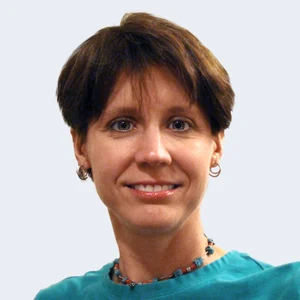 Leigh White has by now worn almost all the DITA hats: authoring, information architecture, stylesheet development, and conversion. At MadCap Software, formerly IXIASOFT, she’s done everything from implementations to training to feature design to product ownership. Leigh’s also a conference veteran, having spoken on XML, DITA, content management systems, content conversion, and even Frank Lloyd Wright over the years. She is the author of “DITA For Print: A DITA Open Toolkit Workbook” and a contributor to “The Language of Content Strategy.” In her spare time, she hikes, conlangs, plans the perfect murder mystery plot, and makes things from wood.
Leigh White has by now worn almost all the DITA hats: authoring, information architecture, stylesheet development, and conversion. At MadCap Software, formerly IXIASOFT, she’s done everything from implementations to training to feature design to product ownership. Leigh’s also a conference veteran, having spoken on XML, DITA, content management systems, content conversion, and even Frank Lloyd Wright over the years. She is the author of “DITA For Print: A DITA Open Toolkit Workbook” and a contributor to “The Language of Content Strategy.” In her spare time, she hikes, conlangs, plans the perfect murder mystery plot, and makes things from wood.
-
Recorded on April 25, 2024
 Join us for an insightful webinar as we explore the trends of generative AI and emerging technologies in technical communication. In this session, we'll review the current state of AI generated content and the future of complex content. Key points we’ll cover:Don't miss this opportunity to stay ahead of the curve and take advantage of Generative AI and emerging technologies to propel your technical communication efforts into the future. Register now to secure your spot! Presented by: Paul Bongers, Acrolinx
Join us for an insightful webinar as we explore the trends of generative AI and emerging technologies in technical communication. In this session, we'll review the current state of AI generated content and the future of complex content. Key points we’ll cover:Don't miss this opportunity to stay ahead of the curve and take advantage of Generative AI and emerging technologies to propel your technical communication efforts into the future. Register now to secure your spot! Presented by: Paul Bongers, Acrolinx-
The multiple use cases for generative AI, including content creation, management, and optimization.
-
How to eliminate the risk of off-brand, non-compliant content that ensures brand integrity.
-
How to streamline workflows and increase efficiency throughout the content supply chain.
 https://www.linkedin.com/in/pbongers/Paul shapes the Acrolinx product strategy. He's worn many hats in SaaS businesses, but at heart he's a strategist and a technologist. Paul brings a wealth of experience and creativity to Acrolinx. His work with partner ecosystem development, SaaS strategy development along with a deep passion for user-centric technology set the tone of innovation at Acrolinx.
https://www.linkedin.com/in/pbongers/Paul shapes the Acrolinx product strategy. He's worn many hats in SaaS businesses, but at heart he's a strategist and a technologist. Paul brings a wealth of experience and creativity to Acrolinx. His work with partner ecosystem development, SaaS strategy development along with a deep passion for user-centric technology set the tone of innovation at Acrolinx.
-
-
Recorded on September 13, 2023
 Beyond the hype, what can GenAI truly do for you today? In this webinar, we will unveil six practical use cases showcasing the remarkable impact of AI in revolutionizing the world of Tech Doc.Join Fabrice Lacroix, CEO of Fluid Topics, in an insightful talk supported by two decades of research and development in LLM and AI. Gain valuable knowledge on how to enhance the tech doc workflow, from content creation to validation, translation, publishing, searching, and reading.
Beyond the hype, what can GenAI truly do for you today? In this webinar, we will unveil six practical use cases showcasing the remarkable impact of AI in revolutionizing the world of Tech Doc.Join Fabrice Lacroix, CEO of Fluid Topics, in an insightful talk supported by two decades of research and development in LLM and AI. Gain valuable knowledge on how to enhance the tech doc workflow, from content creation to validation, translation, publishing, searching, and reading.Presented by Fabrice Lacroix
 Fabrice Lacroix is a serial entrepreneur and a technology pioneer. He has been working for 25 years on the development of innovative solutions around search technology, content enrichment and AI. He is the founder of Fluid Topics, the leading Content Delivery Platform that reinvents how users search, read and interact with technical documentation.
Fabrice Lacroix is a serial entrepreneur and a technology pioneer. He has been working for 25 years on the development of innovative solutions around search technology, content enrichment and AI. He is the founder of Fluid Topics, the leading Content Delivery Platform that reinvents how users search, read and interact with technical documentation. -
Recorded on August 3, 2022
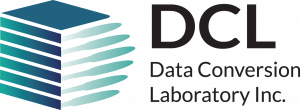
Harmonizer is a powerful tool created by Data Conversion Laboratory that analyzes large document collections to identify content reuse across multiple content sets and source formats. Understanding the volume and nature of duplication in content is invaluable to effectively implement a reuse-based content model like DITA or S1000D. Harmonizer dives deeper into content analysis and can evaluate, identify, and report not only on duplication at the paragraph level but also duplication within specific XML elements such as topics, tasks, concepts, etc. Flexibility in the level of comparison is particularly useful for performing periodic health checks on structured content to diagnose reuse issues or other issues that can arise after DITA or S1000D conversion.
This webinar will demonstrate Harmonizer’s role in performing a health check and speak to use cases that are important for any organization who has invested in DITA or S1000D. Christopher Hill, product manager for Harmonizer and structured content expert, will also detail new licensing models for the software that enable self-serve content health checkups that improve documentation workflows and ensure your investment in markup continues to return healthy results.
Presented by: Christopher Hill, Technical Product and Project Manager at Data Conversion Laboratory – [email protected]
Christopher Hill has 18 years of experience working in publishing and content management. He started his career as a high school teacher but moved into the world of corporate training teaching a range of software and XML courses. He has written and conducted many training courses, was a founding employee of one of the first hosted content management systems and lead the user experience redesign for an enterprise CMS. He now manages the Harmonizer product for Data Conversion Laboratory.
Christopher Hill, Technical Product and Project Manager at Data Conversion Laboratory – [email protected]
Christopher Hill has 18 years of experience working in publishing and content management. He started his career as a high school teacher but moved into the world of corporate training teaching a range of software and XML courses. He has written and conducted many training courses, was a founding employee of one of the first hosted content management systems and lead the user experience redesign for an enterprise CMS. He now manages the Harmonizer product for Data Conversion Laboratory.
-
April 6, 2022 Content reuse is one of the many advantages of moving to DITA and a structured standard. It helps us reduce the amount of overall content we have, improve consistency, and decrease redundancy. However, it is difficult to visualize this value before the conversion takes place. Estimates can be off, and it is hardly ever clear how much content we can actually reuse from our documentation. Typos and partial matches only complicate our futile estimates. Narrowing the scope of this approximation by investigating similar matches in our source content before conversion can provide valuable insight to the potential benefits of moving to a structured standard. Join TJ Dhaliwal in this session as he uses Stilo’s Analyzer and Migrate to investigate source content for similar and exact matches. Then, further use that information to plan for conrefs, keyrefs, and topicrefs before any transformation takes place. Conclude by deduplicating exact topic matches and realizing some of the potential that was uncovered in the beginning. Presented by: TJ Dhaliwal is a Technical Sales Product Specialist at Stilo, helping customers uncover solutions to their content conversion needs. With a strong technical background in engineering combined with a passion for public speaking, he’s been able to successfully bridge the gaps between project stakeholders. As a problem solver, TJ has helped several enterprise-level companies convert tens of thousands of pages of their content to DITA. He’s recently taken lead on and helped bring to market Stilo’s newest product, Analyzer.
-
Recorded on February 28, 2024
 For beginners in DITA XML or for those dealing with ongoing content migration, we provide an easy solution to get up-and-running with your own customized conversion pipeline using our automated Migrate SaaS tool. Register to attend a short 45-minute demo with Stilo’s CTO, Jackson Klein, to learn how this can be accomplished.Presented by: Jackson Klein, Stilo
For beginners in DITA XML or for those dealing with ongoing content migration, we provide an easy solution to get up-and-running with your own customized conversion pipeline using our automated Migrate SaaS tool. Register to attend a short 45-minute demo with Stilo’s CTO, Jackson Klein, to learn how this can be accomplished.Presented by: Jackson Klein, Stilo Jackson has more than 20 years of technical leadership, strategic direction and oversight for successful planning and execution of all stages of R&D, product development and lifecycle. He is responsible for developing and championing Stilo’s technology strategy across all functions of the organization and contributing to Stilo’s long-term vision.Prior to joining Stilo, Jackson managed and led R&D teams to develop and successfully launch software products in the field of design, simulation and analysis of photonic integrated circuits, communication systems and networks. Jackson holds a M.S and a Ph.D. in Electrical and Computer Engineering from State University of Campinas, Brazil and an MBA from the University of Ottawa.
Jackson has more than 20 years of technical leadership, strategic direction and oversight for successful planning and execution of all stages of R&D, product development and lifecycle. He is responsible for developing and championing Stilo’s technology strategy across all functions of the organization and contributing to Stilo’s long-term vision.Prior to joining Stilo, Jackson managed and led R&D teams to develop and successfully launch software products in the field of design, simulation and analysis of photonic integrated circuits, communication systems and networks. Jackson holds a M.S and a Ph.D. in Electrical and Computer Engineering from State University of Campinas, Brazil and an MBA from the University of Ottawa. -
Recorded on July 26, 2023
 Because most organizations want to streamline the content management process, erasing the concern of managing redundant content is mission-critical. However, with large document collections finding duplicative content or nearly duplicative content is extremely challenging. Harmonizer, by Data Conversion Laboratory, is a software application that analyzes document collections using natural language processing to identify redundant content. Harmonizer simultaneously analyzes across any file format – XML, HTML, SGML, Word, Framemaker, InDesign, PDF, and others – and is invaluable when planning a content reuse strategy or moving content to a new platform.
Take part in this webinar to
Because most organizations want to streamline the content management process, erasing the concern of managing redundant content is mission-critical. However, with large document collections finding duplicative content or nearly duplicative content is extremely challenging. Harmonizer, by Data Conversion Laboratory, is a software application that analyzes document collections using natural language processing to identify redundant content. Harmonizer simultaneously analyzes across any file format – XML, HTML, SGML, Word, Framemaker, InDesign, PDF, and others – and is invaluable when planning a content reuse strategy or moving content to a new platform.
Take part in this webinar to
- Understand the relevance of identifying near-duplicate content
- Identify ways to reduce translation/localization costs
- Demonstrate content management cost savings to upper management
Presented by Christopher Hill
 Christopher Hill is the Technical Product Manager for Harmonizer at Data Conversion Laboratory. Chris is an experienced IT professional who started programming in the 1980s. Since the early 2000s, Chris’ experience includes work as a support engineer, product manager, and user interface designer, helping organizations transition data and content to modern digital formats and platforms.
Christopher Hill is the Technical Product Manager for Harmonizer at Data Conversion Laboratory. Chris is an experienced IT professional who started programming in the 1980s. Since the early 2000s, Chris’ experience includes work as a support engineer, product manager, and user interface designer, helping organizations transition data and content to modern digital formats and platforms. -
Recorded on August 28, 2024
 Join us for a fireside chat featuring industry leader, Laura Bellamy and Acrolinx VP of Strategy, Paul Bongers. During this webinar, Paul and Laura will discuss a data-driven content approach to ensure great customer experiences, including:Presented by: Paul Bongers, Acrolinx and Laura Bellamy
Join us for a fireside chat featuring industry leader, Laura Bellamy and Acrolinx VP of Strategy, Paul Bongers. During this webinar, Paul and Laura will discuss a data-driven content approach to ensure great customer experiences, including:Presented by: Paul Bongers, Acrolinx and Laura Bellamy- How a data-driven approach supports content quality initiatives in the enterprise.
- How AI is changing the way organizations look at content quality.
- The impact of AI in the content supply chain.
 Paul Bongers, VP StrategyPaul shapes the Acrolinx product strategy. He's worn many hats in SaaS businesses, but at heart he's a strategist and a technologist. Paul brings a wealth of experience and creativity to Acrolinx. His work with partner ecosystem development, SaaS strategy development along with a deep passion for user-centric technology set the tone of innovation at Acrolinx.
Paul Bongers, VP StrategyPaul shapes the Acrolinx product strategy. He's worn many hats in SaaS businesses, but at heart he's a strategist and a technologist. Paul brings a wealth of experience and creativity to Acrolinx. His work with partner ecosystem development, SaaS strategy development along with a deep passion for user-centric technology set the tone of innovation at Acrolinx. Laura Bellamy, Director of Content Insights and Quality
[email protected]
Laura has 20+ years of experience in the content and customer experience industry where she brings a forward-thinking mindset to help teams adapt and grow. She has been recognized for award-winning user-centered experiences and innovations. Formerly at AWS, she led the Content Insights & Quality to establish evidence-based standards for content quality and performance. Prior to Amazon, she led Content Strategy and Information Experience for VMware and served as an information architect for IBM. She is a co-author of the book DITA Best Practices: A Roadmap for Writing, Editing, and Architecting in DITA.
Laura Bellamy, Director of Content Insights and Quality
[email protected]
Laura has 20+ years of experience in the content and customer experience industry where she brings a forward-thinking mindset to help teams adapt and grow. She has been recognized for award-winning user-centered experiences and innovations. Formerly at AWS, she led the Content Insights & Quality to establish evidence-based standards for content quality and performance. Prior to Amazon, she led Content Strategy and Information Experience for VMware and served as an information architect for IBM. She is a co-author of the book DITA Best Practices: A Roadmap for Writing, Editing, and Architecting in DITA.
